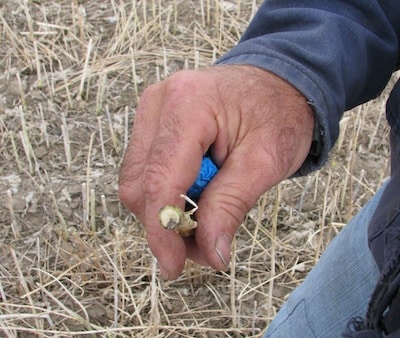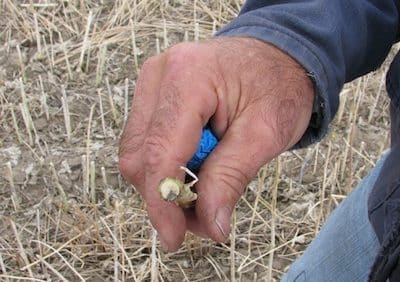
1. Assess the disease situation, but scout accurately. Check patches of pre-mature ripened canola before or during swathing. Use the Canola Diagnostic Tool at www.canoladiagnostictool.ca to help identify the cause. It could be blackleg, clubroot, sclerotinia stem rot, root rot or something else entirely. With an accurate ID, growers can use this information to plan rotations and update fungicide decision-making for next year.
2. Consider the disease situation when choosing varieties. For example, has blackleg become a yield limiting problem again, and what does that mean for your variety selection? Start asking local seed reps for the varieties and traits you’re looking for. If you’re not in a traditional clubroot area but you want a clubroot resistant variety, this may be a good time to place the order so the seed company can plan to bring something in for you.
3. Recognize what issues were agronomic and what were environmental. Poor growing conditions can sometimes overwhelm good agronomy. Before changing practices for next year, consider whether the problem was something you could manage better next time or the result of bad weather.
4. Evaluate variety performance. Did varieties perform as expected? When comparing yield performance for different varieties on the farm, make fair comparisons. Seeding date, soil moisture, field topography, crop rotation and residual soil nutrients are all factors that can influence yield — even when comparing fields seeded to the same variety and given the same treatments.
5. Manage residue with the combine. Spreading residue evenly across the field is critical for accurate and consistent canola seed placement next spring. If the combine didn’t do a good job, harrowing dry straw is the next best option.
6. Identify weeds before making fall weed control decisions. Post harvest is a good time to control winter annuals, biennials and perennials. Note which products are registered and recommended for fall use ahead of canola.
7. Manage volunteer canola. Canola crops leave an average of 2-3 bushels per acre of seed in the field, or at least 20 times the seeding rate. Swaths flipped and rolled by heavy winds can increase this number significantly. Leaving seeds undisturbed so they germinate in the fall or get eaten by birds and insects is a good way to reduce the volunteer seedbank. When tillage is necessary, hold off for a few weeks if possible to allow predation and seed germination before seeds are buried. Also keep in mind that burying the seed can induce seed dormancy, keeping that canola seed viable longer, possibly for years.
8. Count stems after harvest. Crops that got off to a poor start, with low counts and uneven emergence, are often the ugliest looking crops at harvest. Take harvest plant counts in good and bad fields and relate those counts to pest management issues through the year, harvest timing, quality issues, and yield.
9. Do a fall soil test. With soil analysis results in hand before winter, growers have more time to plan their fertilizer program for next year, to order fertilizer, and to take advantage of reduced pricing opportunities that may occur. For fall results that more closely predict spring residual levels, sample when soil temperatures drop below 10°C and as close to freeze-up as possible.
10. Sample soil for clubroot. If you suspect fields may be at risk for clubroot but you haven’t seen any damage in canola field, you can test soil for presence of clubroot DNA.

